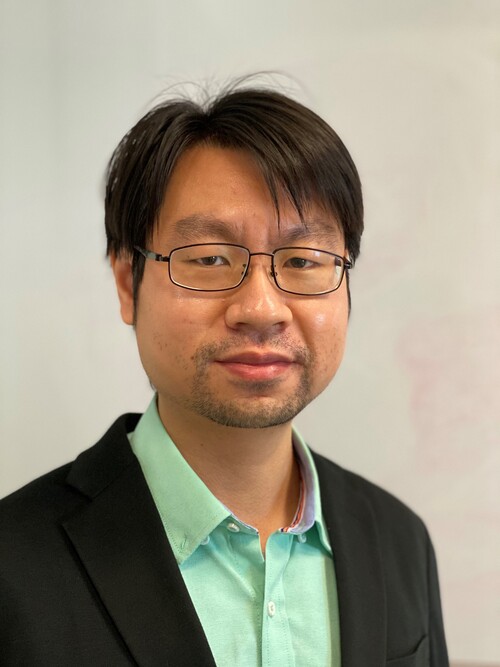 | Dr Chaogu ZHENG Assistant Professor of School of Biological Sciences
|
Q: What do you think are your most significant research accomplishments, and what has been the impact of your research?
A: I have been working on the genetic mechanisms that regulates the differentiation of neurons in the nervous system for the past 13 years. There have been a lot of progresses in understanding nervous system development in the model organism I use, namely the nematode Caenorhabditis elegans, which is used by scientists working on various problems of biology. My specific contribution to the field would be a series of studies that illustrated the genetic control of the differentiation of the mechanosensory neurons (called Touch Receptor Neurons) from cell fate determination to subtype diversification to the growth of axons, at the single-cell resolution. The organising principles of neuronal differentiation we found in this type of neurons appeared to be conserved in other neurons, including mammalian neurons.
Q: Please give a brief description of 1 - 2 ongoing research projects that best reflect your visions in the scientific field.
A: Currently, my lab continues to work on problems related to neuronal development, for example on how the control of RNA-splicing regulates neuronal morphogenesis. But we also started working on two very exciting directions, one is the microbe-host interaction in the context of neurodegeneration and the other is the evolution of neuronal diversity. For the first direction, we screened for bacterial genes that promote host neurodegeneration and found many interesting molecules, including the bacteria-secreted curli that can enter the neurons to nucleate and promote the aggregation of alpha-synuclein in Parkinson’s disease models. For the second direction, we are very interested in understanding how changes in the genome can lead to the evolution of neuron types. In other words, how a structure as complex as the nervous system is evolved as the genome changes at a molecular level. I think these two are both fascinating questions to work on and we hope to make some contributions using our systems.
Q: What is the most important question you want to address?
A: I think one of the most important questions in neuroscience and arguably in biology is how the nervous system is formed. The brain has over 80 billion neurons and 100 trillion synaptic connections. It is a super complex structure and difficult to study. One possible way out from the challenges is to study something simple first. Therefore, we chose to work on this nematode, Caenorhabditis elegans, which has only 302 neurons. The research community has made a lot of progresses in understanding the development of the nervous system in this model organism.
For example, we have the complete connectome, which provides an excellent platform to study the assembly of neural circuits. Once we understand the organising principles for neuronal development at the system level, there may be a chance to tackle the daunting questions about the formation of the human brain. I also think understanding the organisation of the brain can help other fields, such as computer science and artificial intelligence.
Q: Where do you see yourself in five years/ten years? What do you want to accomplish the most?
A: In next five and ten years, I hope to make some contributions in three areas, including 1) the mechanisms of neuronal differentiation and neural circuit assembly; 2) microbe-host interaction in neurodegeneration; 3) the genomic basis for the evolution of neuronal diversity.
Q: How would you bridge the gap from your research to research users?
A: I think publicising our research work is important, so other people will know what we are doing in the lab. But oftentimes this is difficult, because most of our research is to build the human knowledge in this particular field and it may not have any immediate relevance to the public. However, without the hard work of building the foundation for a discipline, applied research is just impossible.
I think it is important to work on basic questions, which may not have immediate translational potential but may lead to technological leap in the future. That being said, our work in modeling neurodegenerative disease may have some impact, since the bacterial components we identified that can promote neurodegeneration may become drug targets for the treatment of neurodegenerative diseases.
Q: What are the challenges you are facing?
A: One challenge is the difficulty of recruiting talented students and postdocs to Hong Kong. For science, Hong Kong is still a quite remote place. But we are gradually building our reputation in the international science community. Also, the limited lab space and expensive housing are also big challenges in recruiting people and growing the research team.
Q: Who has influenced you the most?
A: My PhD and Postdoc advisor, Professor Martin CHALFIE, influenced me the most. He is the Nobel Laureate in Chemistry in 2008 and made significant contributions to the development of green fluorescent protein (GFP) as a biological tool. He also did some pioneering work on understanding mechanosensation and cellular development. He maintains strong curiosity on almost everything in life and has such inspirational positivity and honesty towards science, which made a profound impact on how I think about science.
Q: How would you go about motivating yourself when you are going through a low point?
A: I usually just focus on the problems in science, which can help distract me from all the other upsetting things going on in everyday life.
Q: Can you tell us more about your research group? What are the roles and the missions?
A: My research group has two Postdoc, six graduate students, and two RAs. It is a healthy mixture of locals and people from outside of Hong Kong. I encourage the people in my lab to think freely and work independently. They both work on the projects I am interested in and also develop new directions by themselves. In general, I hope young students nowadays can dream bigger and be more ambitious.

